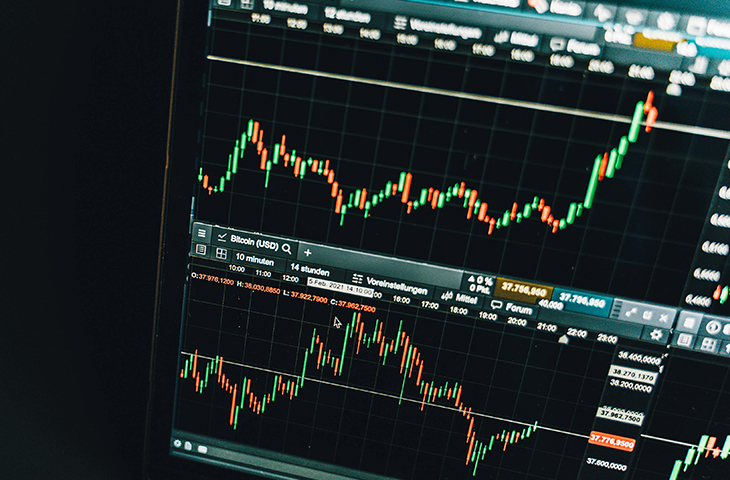Worried About A Stock Market Sell-off In 2025? Consider Buying This Ultra-safe Vanguard Etf In December.

Volatility spiked in the broader indexes after the Federal Reserve indicated that it could keep interest rates higher for longer. The S&P 500 fell 3% on Dec. 18, and the Nasdaq Composite tumbled 3.6%. Investors who are worried about a further sell-off -- but want to keep putting new savings to work in the stock market -- have come to the right place.
Low-cost exchange-traded funds (ETFs) offer diversification by investing in dozens, hundreds, and sometimes thousands of stocks. The Vanguard U.S. Minimum Volatility ETF (NYSEMKT: VFMV) has a mere 0.13% expense ratio, or $1.30 for every $1,000 invested. Here's why it's a great buy for 2025.
Start Your Mornings Smarter! Wake up with Breakfast news in your inbox every market day. Sign Up For Free »
Image source: Getty Images.
Diversified exposure to companies you can count on
The Vanguard U.S. Minimum Volatility ETF targets super-safe companies, many of which pay dividends. The fund has 161 holdings, with no individual holding making up more than 1.6% of the fund.
Top holdings include recognizable names like Procter & Gamble, Johnson & Johnson, General Mills, and AT&T. These companies are known for their slow and steady growth no matter what the economy is doing.
Dividends are a core aspect of the investment thesis for these companies. Instead of rewarding investors with outsized growth, companies in the Vanguard U.S. Minimum Volatility ETF provide stable passive income to their shareholders. They also tend to be valued more for the businesses they are today, rather than the businesses they could be in the future.
Meanwhile, well-known growth stocks like Nvidia or Amazon are valued based on potential cash flows. These companies don't pay dividends. Instead, they reinvest profits back into their businesses. When done right, the formula can produce outsized gains relative to safer companies. However, companies like Nvidia and Amazon tend to be volatile, because their growth rates can fall dramatically during an economic or industrywide slowdown.
Not your typical value fund
The Vanguard U.S. Minimum Volatility ETF may focus more on income and value. But that doesn't mean the entire investment thesis is based on passive income alone. The fund sports a slightly higher yield than the S&P 500 at 1.4%, and a price-to-earnings (P/E) ratio of 25.3, compared to a 30 P/E for the S&P 500.
Unlike other value funds that are in super underweight growth sectors, the Vanguard U.S. Minimum Volatility ETF has a 22.7% concentration in the technology sector. The fund holds noteworthy names like Apple, Microsoft, Texas Instruments, Cisco Systems, Spotify Technology, and more.
The key difference between this fund and market-cap-weighted funds like the Vanguard Information Technology ETF is that the Vanguard U.S. Minimum Volatility ETF is more like an equal-weight fund. That means Apple and Texas Instruments both make up 1.3% of the fund. In comparison, Apple holds a whopping 16.2% weighting in the Vanguard tech ETF and just 1.1% for Texas Instruments.
Again, the objective of the Vanguard U.S. Minimum Volatility ETF is to limit volatility. It accomplishes that goal by being highly diversified and not allowing a handful of companies to move the fund in a big way. The growth stocks it does target tend to be industry-leading companies that produce consistent results, not high-flying companies valued purely on their potential.
Invest with confidence using the Vanguard U.S. Minimum Volatility ETF
The Vanguard U.S. Minimum Volatility ETF is worth a closer look for investors seeking balanced options in a relatively expensive market. The fund is more dynamic and value-oriented than funds that are purely focused on high-yield stocks. Despite its stodgy-sounding name, the fund can produce solid gains, with the ETF up 15.8% year to date.
There are plenty of higher-yielding, low-cost Vanguard ETFs out there, which passive income investors may want to consider. But folks who are OK with a lower yield and more diversification may wish to explore the Vanguard U.S. Minimum Volatility ETF.
Should you invest $1,000 in Vanguard Wellington Fund - Vanguard U.s. Minimum Volatility ETF right now?
Before you buy stock in Vanguard Wellington Fund - Vanguard U.s. Minimum Volatility ETF, consider this:
The Motley Fool Stock Advisor analyst team just identified what they believe are the 10 best stocks for investors to buy now… and Vanguard Wellington Fund - Vanguard U.s. Minimum Volatility ETF wasn’t one of them. The 10 stocks that made the cut could produce monster returns in the coming years.
Consider when Nvidia made this list on April 15, 2005... if you invested $1,000 at the time of our recommendation, you’d have $825,513!*
Stock Advisor provides investors with an easy-to-follow blueprint for success, including guidance on building a portfolio, regular updates from analysts, and two new stock picks each month. The Stock Advisor service has more than quadrupled the return of S&P 500 since 2002*.
*Stock Advisor returns as of December 16, 2024
John Mackey, former CEO of Whole Foods Market, an Amazon subsidiary, is a member of The Motley Fool's board of directors. Daniel Foelber has no position in any of the stocks mentioned. The Motley Fool has positions in and recommends Amazon, Apple, Cisco Systems, Microsoft, Nvidia, Spotify Technology, and Texas Instruments. The Motley Fool recommends Johnson & Johnson and recommends the following options: long January 2026 $395 calls on Microsoft and short January 2026 $405 calls on Microsoft. The Motley Fool has a disclosure policy.


